Using a Drain Snake with a Drill: A Comprehensive Guide

Do you have a clogged drain and no plunger in sight? Don’t worry, because there is a powerful tool that can help you clear that blockage: a drain snake. A drain snake is a long, flexible metal coil that can be inserted into your drain to break up and remove any clogs. While using a drain snake can be effective on its own, combining it with a drill can make the process even easier and faster.
When using a drain snake with a drill, you attach the snake to the drill’s chuck and use the drill’s power to rotate the snake as it moves through the pipe. This rotary motion creates a spinning action that helps to break up and dislodge any clogs in the pipe. However, it’s important to note that not every drain snake is compatible with a drill, so be sure to choose one that is specifically designed for use with power tools.
Using a drain snake with a drill can be a great option for tough clogs and blockages that are difficult to clear by hand. The drill’s power and rotation speed can provide the extra force needed to break through stubborn clogs and effectively clear your drain. It’s important to follow the manufacturer’s instructions for both the drain snake and the drill to ensure safe and effective use.
In this comprehensive guide, we will walk you through the step-by-step process of using a drain snake with a drill to clear a clogged drain. We will cover everything from choosing the right drain snake and drill bit to properly inserting the snake into the drain and safely operating the drill. By the end of this guide, you will have all the knowledge and skills you need to tackle even the toughest drain clogs.
What is a Drain Snake and How Does It Work?
A drain snake, also known as a plumber’s snake or a drain auger, is a tool used to clear clogs from pipes and drains. It is a flexible, long, and coiled wire with a handle on one end and a corkscrew-like attachment or a grabber on the other end.
The basic working principle of a drain snake involves inserting the wire into a drain until it reaches the clog. The user then rotates the handle of the drain snake, causing the wire to spin. This spinning motion helps break up the clog or debris and push it further down the pipe or pull it out.
Components of a Drain Snake
A drain snake typically consists of the following components:
- Wire: The wire is the main part of the drain snake and is usually made of steel or another durable material. It is long enough to reach the clog and flexible enough to navigate through bends and curves in the pipe.
- Handle: The handle is attached to one end of the wire and provides a grip for the user to rotate the snake.
- Corkscrew Attachment or Grabber: The other end of the wire features a corkscrew-like attachment or a grabber. The corkscrew attachment is used to break up clogs, while the grabber is used to catch and retrieve objects causing the blockage.
Using a Drain Snake
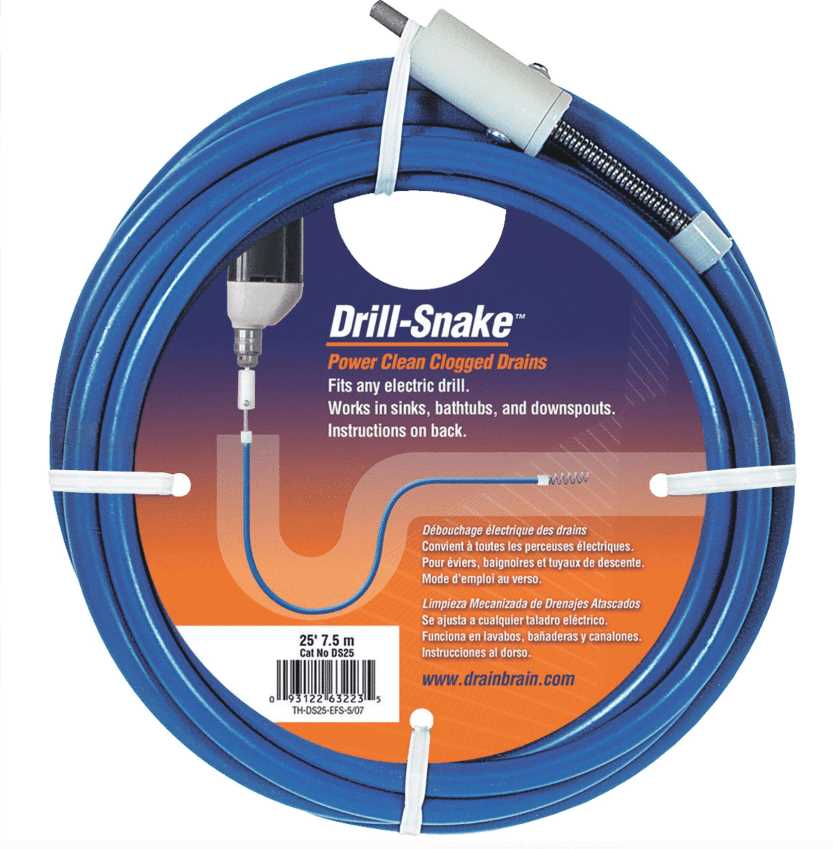
To use a drain snake, follow these steps:
- Insert the wire into the drain until you reach the clog. You may need to remove the drain cover or trap to gain access to the pipe.
- Gently push the wire further into the pipe while rotating the handle in a clockwise motion. This helps break up the clog or grab onto it.
- If you encounter resistance, try pulling the wire back slightly and then pushing it forward again to dislodge the clog.
- Once the clog is either broken up or caught on the wire, slowly pull the wire out of the drain. Discard any debris that comes out with the wire.
- Repeat the process if necessary until the drain is clear.
Note: It is important to use a drain snake carefully and follow the manufacturer’s instructions to avoid damaging the pipes or causing further clogs.
Understanding the Purpose and Mechanism of a Drain Snake
Purpose of a Drain Snake
A drain snake, also known as a plumber’s snake or drain auger, is a tool used to unclog drains and pipes. It is designed to remove blockages that are not easily accessible or removable by other means, such as using a plunger or pouring chemical drain cleaners.
Drain snakes are commonly used in both residential and commercial settings to clear debris and obstructions that can accumulate over time, causing slow draining or complete blockage. They are particularly effective in dealing with tough clogs caused by hair, grease, soap scum, food particles, and mineral deposits.
Mechanism of a Drain Snake
A drain snake typically consists of a flexible cable or wire auger that is inserted into the drain or pipe. The cable is coiled inside a drum or reel and can be manually rotated or powered by a drill for easier operation.
The tip of the drain snake is designed to grab onto or break up the clog, allowing it to be pulled out or pushed further into the pipe. The cable is flexible enough to navigate through bends and curves in the pipes, ensuring that the entire length of the clog is reached.
Some drain snakes also include a cutting blade attachment that is useful for cutting through tough clogs like tree roots. This attachment can be rotated using the drill, providing additional cutting power.
Using a Drain Snake
To use a drain snake, the operator inserts the cable into the drain or pipe until it reaches the clog. Once in position, the cable is rotated manually or using a drill to break up or grab onto the clog. The snake is then slowly pulled back, allowing the clog to be removed or pushed further into the pipe.
It is important to use caution when operating a drain snake, as excessive force or incorrect technique can cause damage to the pipes. Following the manufacturer’s instructions and using the appropriate size and type of snake for the job is crucial to ensuring safe and effective unclogging.
| Advantages |
|---|
| Effective in removing tough clogs |
| Can reach clogs that are not easily accessible |
| Does not require the use of harsh chemicals |
| Can be used in a variety of drain and pipe sizes |
| Durable and long-lasting |
Why Use a Drill with a Drain Snake?
Using a drill with a drain snake can significantly improve the effectiveness and efficiency of clearing clogged drains. While a drain snake alone can be a useful tool for clearing minor clogs, combining it with a drill provides several advantages:
- Increased power: By attaching a drain snake to a drill, you can harness the power and speed of the drill to effectively break up tough clogs. The rotation of the drill helps to dislodge debris and obstructions in the drain, making it easier to clear the pipe.
- Better control: Using a drill allows you to have better control over the movement and direction of the drain snake. The smooth rotation and variable speed settings of the drill allow for precise handling, making it easier to navigate through twists and turns in the pipe.
- Time-saving: The combination of a drill and a drain snake can save you time and effort compared to using a manual crank or hand-powered drain snake. The drill’s power and speed can quickly and efficiently clear clogs, reducing the amount of time spent on the task.
- Versatility: Using a drill with a drain snake expands the range of applications for the tool. Not only can it be used for clearing clogged drains, but it can also be used for other plumbing tasks like retrieving objects dropped down the drain or removing stubborn blockages in sewer lines.
In summary, using a drill with a drain snake provides increased power, better control, time-saving benefits, and versatility. It is a convenient and effective method for clearing clogs in drains of various sizes and materials.
Exploring the Benefits of Using a Drill for Drain Cleaning
1. Increased Cleaning Power
Using a drill for drain cleaning can significantly increase the cleaning power compared to manual methods. The rotational force generated by a drill helps to break up tough clogs and remove debris that may be causing blockages in the drain. This increased power allows for a more thorough cleaning, resulting in improved drainage and a more efficient plumbing system.
2. Time-Saving
Using a drill equipped with a drain snake attachment can save valuable time when it comes to cleaning drains. The drill’s power and speed make it quick and effective at removing clogs, allowing you to complete the task in a fraction of the time compared to manual methods. This is especially beneficial for those with busy schedules or numerous drains to clean.
3. Versatility
Another advantage of using a drill for drain cleaning is its versatility. The drill can be used with a variety of different attachments and accessories, making it suitable for different types of drains and clogs. Whether you need to clean a small bathroom sink drain or a larger sewer line, the drill can be equipped with the necessary tools to tackle the job effectively.
4. Cost-Effective
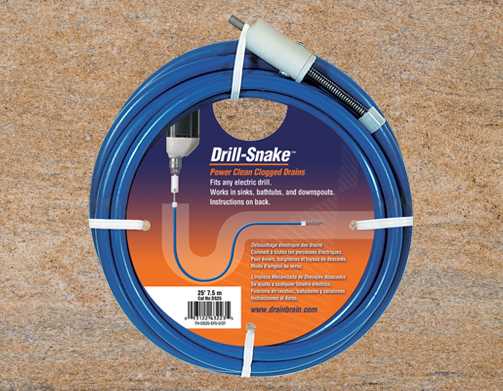
Investing in a drill for drain cleaning can be a cost-effective solution in the long run. While there may be an initial investment to purchase the drill and any required attachments, the savings come from being able to handle drain cleaning tasks without needing to hire a professional plumber. With regular maintenance and proper use, a drill can provide years of reliable drain cleaning service.
5. Easy to Use
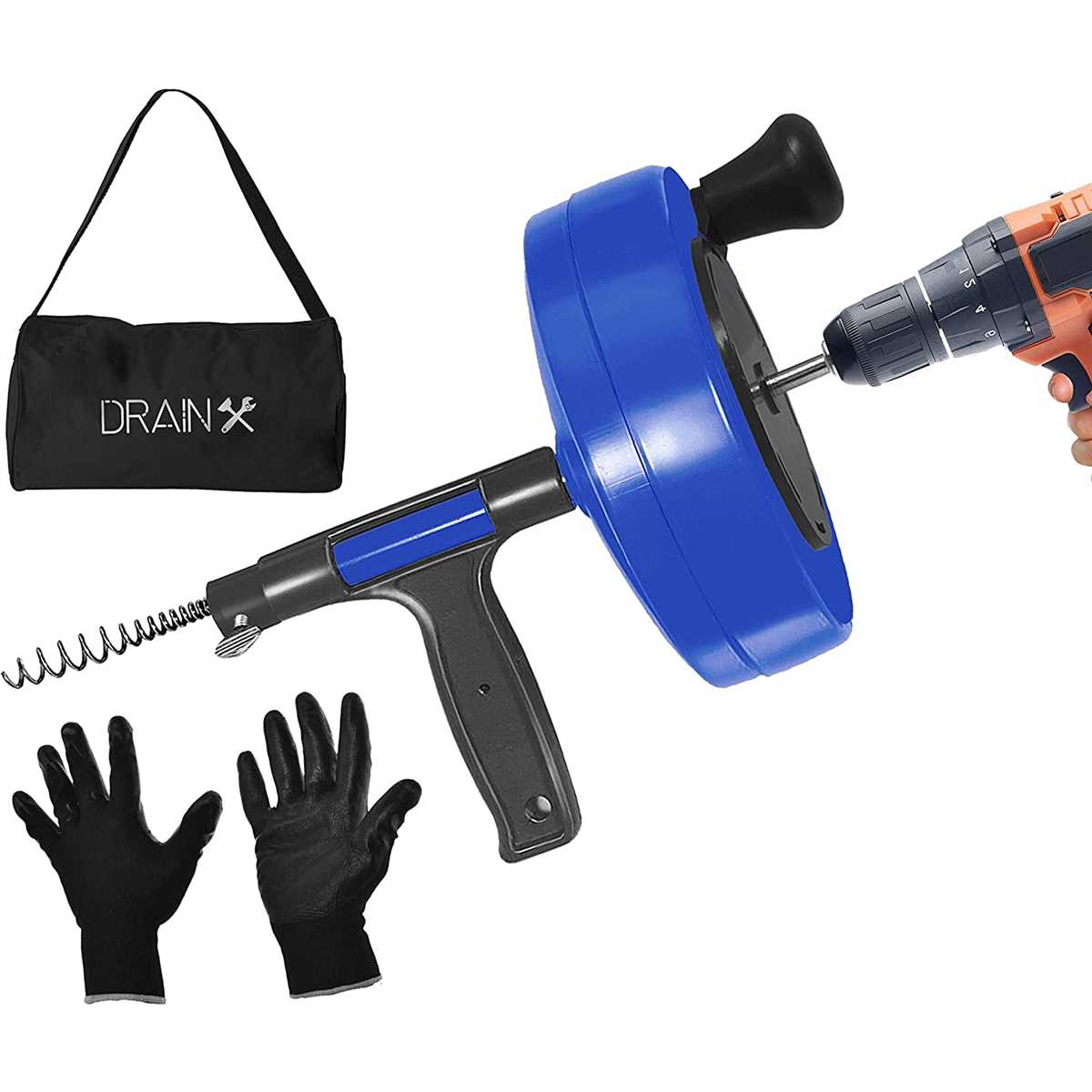
Using a drill for drain cleaning is relatively easy and straightforward. Most drills require minimal setup and can be easily operated by following the manufacturer’s instructions. This makes it accessible for homeowners and DIY enthusiasts who may not have extensive plumbing experience. However, it is crucial to exercise caution and follow safety guidelines to avoid any accidents or damage.
Conclusion
Overall, using a drill for drain cleaning offers several benefits, including increased cleaning power, time-saving, versatility, cost-effectiveness, and ease of use. It can be a valuable tool in maintaining a clean and efficient plumbing system. However, it is essential to choose the right attachments and use the drill responsibly to avoid any potential damage to the pipes or plumbing fixtures.
Choosing the Right Drain Snake Attachment for Your Drill
When it comes to using a drain snake with your drill, one of the most important things to consider is choosing the right attachment. The attachment you choose will depend on the type of drain you are working with and the specific problem you are trying to solve.
Types of Drain Snake Attachments
There are several different types of drain snake attachments available for use with a drill. Here are some of the most common ones:
- Corkscrew Attachment: This attachment features a spiral-shaped corkscrew that is designed to grab hold of hair and other debris that may be clogging the drain.
- Sawtooth Attachment: This attachment has sharp sawtooth edges that are ideal for breaking up tough clogs and removing built-up residue.
- Hook Attachment: This attachment features a hook at the end, which can be used to grab and remove objects that may be obstructing the drain.
- Auger Attachment: This attachment resembles a long coiled spring and is perfect for dislodging and breaking up stubborn clogs.
Considerations for Choosing the Right Attachment
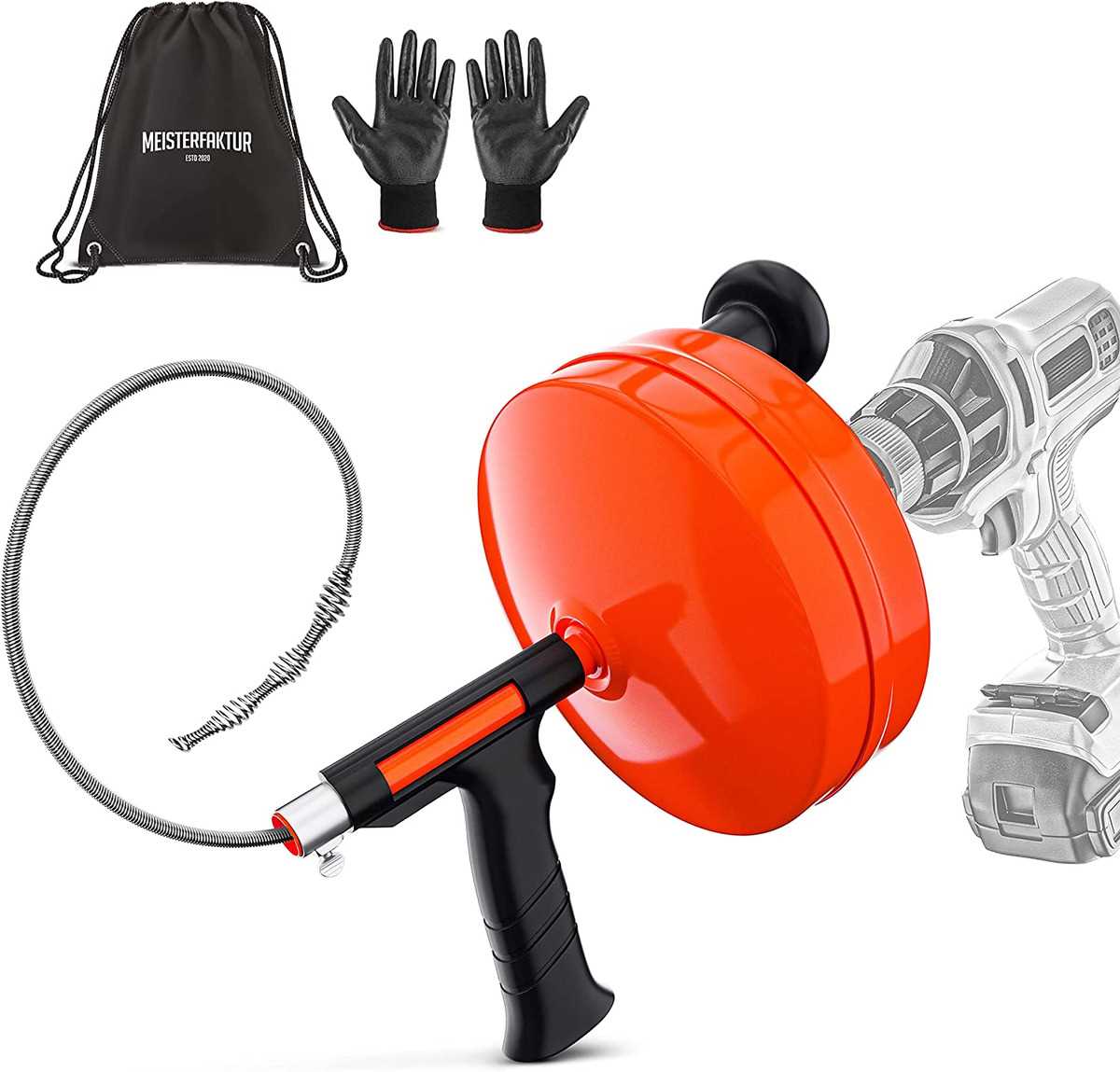
When choosing a drain snake attachment for your drill, there are a few important considerations to keep in mind:
- Drain Type: Consider the type of drain you will be working with. Different attachments are better suited for different drain types, such as sinks, showers, or toilets.
- Clog Severity: Assess the severity of the clog. For minor clogs, a simple corkscrew attachment may be sufficient, but for more stubborn clogs, a sawtooth or auger attachment may be necessary.
- Flexibility: Consider the flexibility of the attachment. Some attachments have a rigid design, which may be suitable for straight drains, while others are more flexible and can navigate through curved pipes.
- Compatibility: Ensure that the attachment you choose is compatible with your drill. Check the specifications of both the attachment and the drill to ensure they are a proper match.
Conclusion
Choosing the right drain snake attachment for your drill is essential for effectively and efficiently tackling clogs and blockages. Consider the type of drain, severity of the clog, flexibility needs, and compatibility with your drill to make the best choice for your specific situation.
Considerations for Selecting the Appropriate Attachment
When using a drain snake with a drill, it is important to choose the right attachment for the specific job at hand. The attachment you select will depend on a few key factors:
Type of Blockage
The first consideration is the type of blockage you are dealing with. Different attachments are designed to tackle different types of blockages, so it is important to determine the nature of the clog before selecting an attachment.
For simple hair clogs or other minor obstructions, a hook attachment may be sufficient. This attachment features a small hook-shaped wire that can be inserted into the drain and rotated to catch onto the clog, allowing you to pull it out.
For more stubborn clogs, such as those caused by solidified grease or mineral deposits, a spiral attachment may be necessary. This attachment features a long, flexible spiral wire that can be inserted deep into the drain, allowing you to break up and dislodge the clog.
Size of the Drain
The size of the drain will also play a role in determining the appropriate attachment. It is important to choose an attachment that is compatible with the size of your drain to ensure effective cleaning.
For smaller drains, such as those typically found in bathroom sinks or showers, a narrower attachment may be necessary. These attachments are designed to fit into tight spaces and navigate smaller pipes.
For larger drains, such as those found in kitchen sinks or main sewer lines, a wider attachment may be required. These attachments are designed to cover a wider area and can more effectively break up and remove larger clogs.
Drill Compatibility
Finally, it is important to consider the compatibility of the attachment with your drill. Most attachments are designed to fit onto a standard drill chuck, but it is always a good idea to check the specifications of both your drill and the attachment to ensure they are compatible.
It may be helpful to consult the instruction manual for your drill or contact the manufacturer if you are unsure about compatibility. Using an attachment that is not properly compatible with your drill could result in poor performance or even damage to the equipment.
By considering the type of blockage, size of the drain, and drill compatibility, you can choose the appropriate attachment for your drain snake and effectively tackle even the toughest clogs.
Safety Precautions for Using a Drain Snake with a Drill
1. Wear Protective Gear
When using a drain snake with a drill, it is important to protect yourself by wearing the appropriate gear. This includes safety goggles to protect your eyes from any debris that may be dislodged during the process. Additionally, it is recommended to wear gloves to protect your hands from any sharp edges or potential chemical exposure.
2. Ensure Proper Ventilation
Before using a drain snake with a drill, make sure that the area you are working in is well-ventilated. This will help to prevent the buildup of any fumes or gases that may be present. If necessary, open windows or use fans to ensure adequate airflow.
3. Familiarize Yourself with the Equipment
Prior to using the drain snake and drill, take the time to thoroughly read the manufacturer’s instructions and familiarize yourself with the equipment. This will help you understand how to properly operate the tools, as well as any specific safety precautions that may be relevant.
4. Disconnect Power Source
Before attempting to use a drain snake with a drill, always disconnect the power source. This will help prevent any accidental start-ups or electrical shocks. Double-check that the power is off by flipping the circuit breaker or unplugging the drill from the power outlet.
5. Clear the Area
Before starting any work, it is important to clear the area around the drain. Remove any objects or obstacles that could interfere with the operation of the drain snake or drill. This will help to ensure safe and unobstructed use of the tools.
6. Use Proper Technique
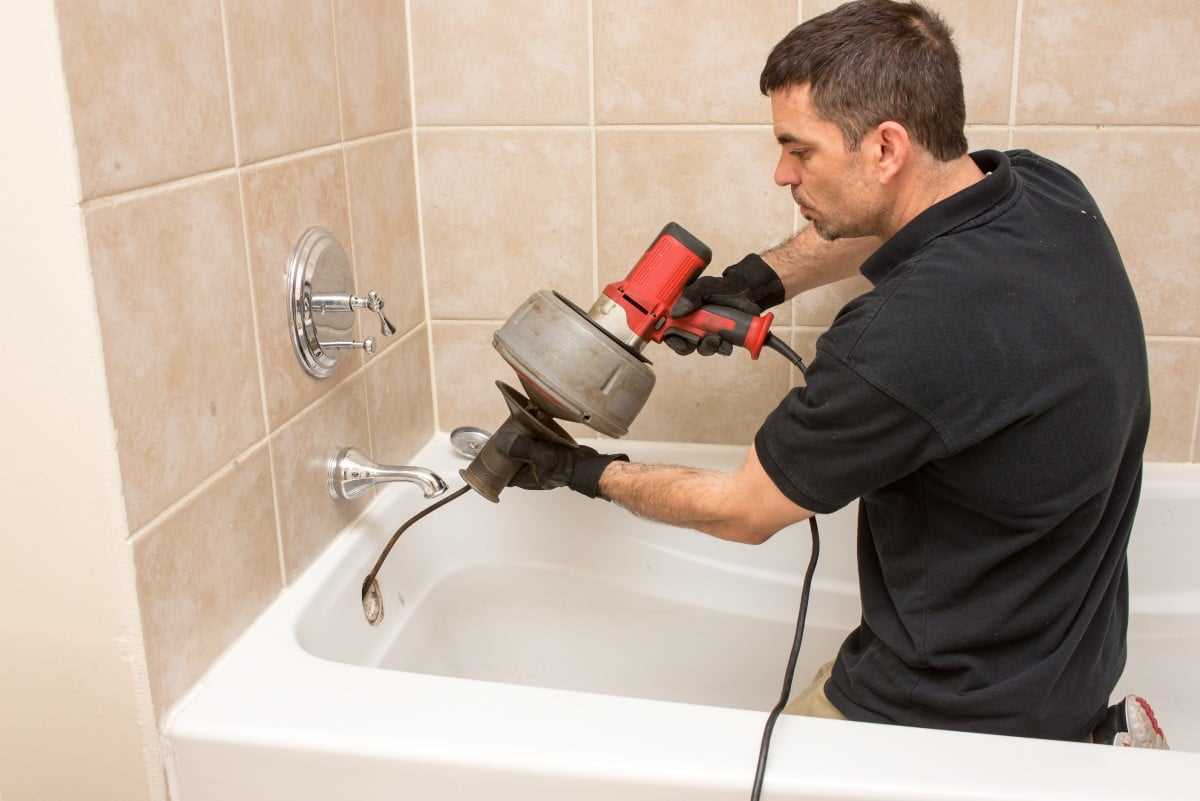
When using a drain snake with a drill, it is important to follow the proper technique to avoid accidents or injuries. Always feed the snake slowly and steadily into the drain, maintaining a firm grip on the drill. Avoid applying excessive force or pulling back too forcefully, as this can cause the snake to become entangled or break.
7. Be Aware of Potential Hazards
While using a drain snake with a drill, be mindful of potential hazards that may arise. Keep an eye out for any exposed wires, sharp edges, or unstable surfaces that could pose a risk. If you notice any potential hazards, address them before proceeding with the work.
8. Keep Others at a Safe Distance
During the process of using a drain snake with a drill, it is important to keep other individuals at a safe distance. This will help prevent anyone from accidentally coming into contact with the tools or being harmed by dislodged debris.
9. Clean Up Properly
After using a drain snake with a drill, be sure to properly clean up the work area. Dispose of any debris or materials that were removed from the drain, and clean the tools as per the manufacturer’s instructions. This will help to maintain a safe and organized work environment.
10. Seek Professional Help if Needed
If you are unsure about the process or encounter any difficulties while using a drain snake with a drill, it is always better to seek professional help. Plumbing experts are trained to handle such situations and can ensure that the job is done safely and efficiently.
Important Steps to Ensure Safe and Effective Usage
Using a drain snake with a drill can be an effective method to unclog drains, but it is important to follow certain steps to ensure both safety and effectiveness. Here are some important steps to keep in mind:
1. Read the Instructions
Before using a drain snake with a drill, it is important to read and understand the instructions provided by the manufacturer. This will help you understand how to properly handle the equipment and avoid any potential hazards.
2. Wear Safety Gear
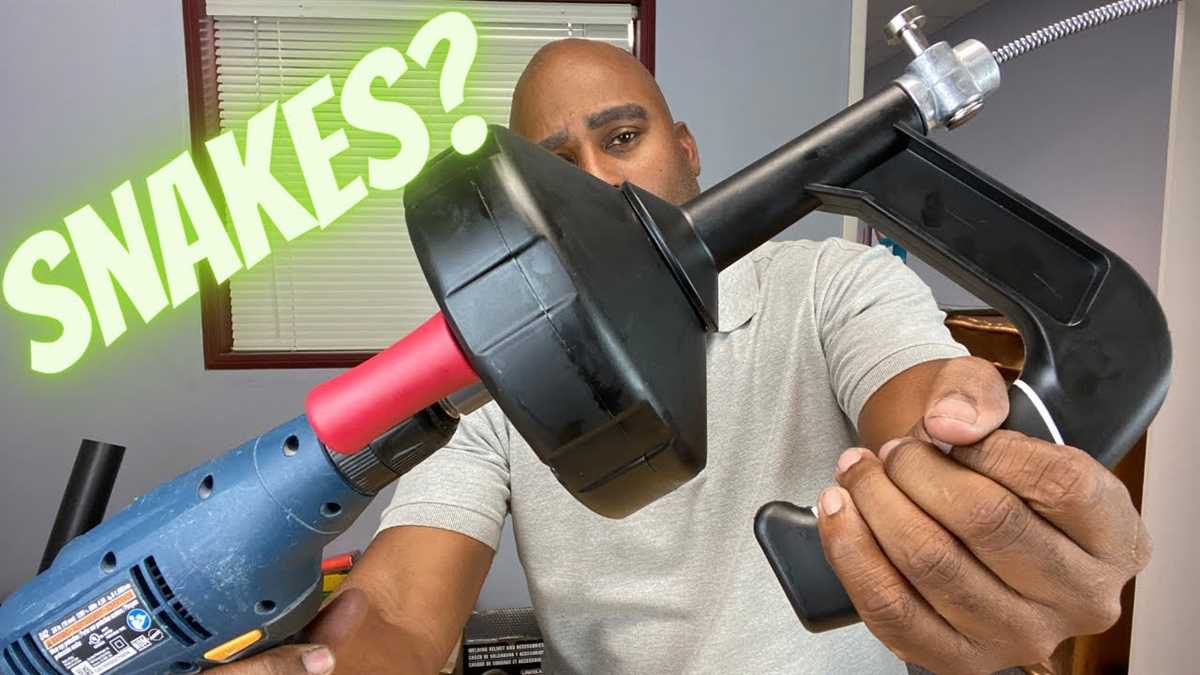
When using a drain snake, it is important to wear appropriate safety gear to protect yourself from any potential injuries. This may include safety glasses, gloves, and closed-toe shoes.
3. Prepare the Area
Prior to using the drain snake, it is important to prepare the area by removing any obstacles or debris that may interfere with the process. This includes removing any items from the sink or drain and ensuring there is enough space to maneuver the drill.
4. Insert the Drain Snake
Carefully insert the drain snake into the drain opening, ensuring it goes as far down as possible without forcing it. Slowly turn on the drill and slowly feed the snake further into the drain, using the drill to provide the necessary rotating force.
5. Apply Gentle Pressure
While using the drill and drain snake, it is important to apply gentle pressure to avoid damaging the pipes or the equipment. Push and pull the snake back and forth, allowing the rotating motion to break up and remove the clog.
6. Monitor the Progress
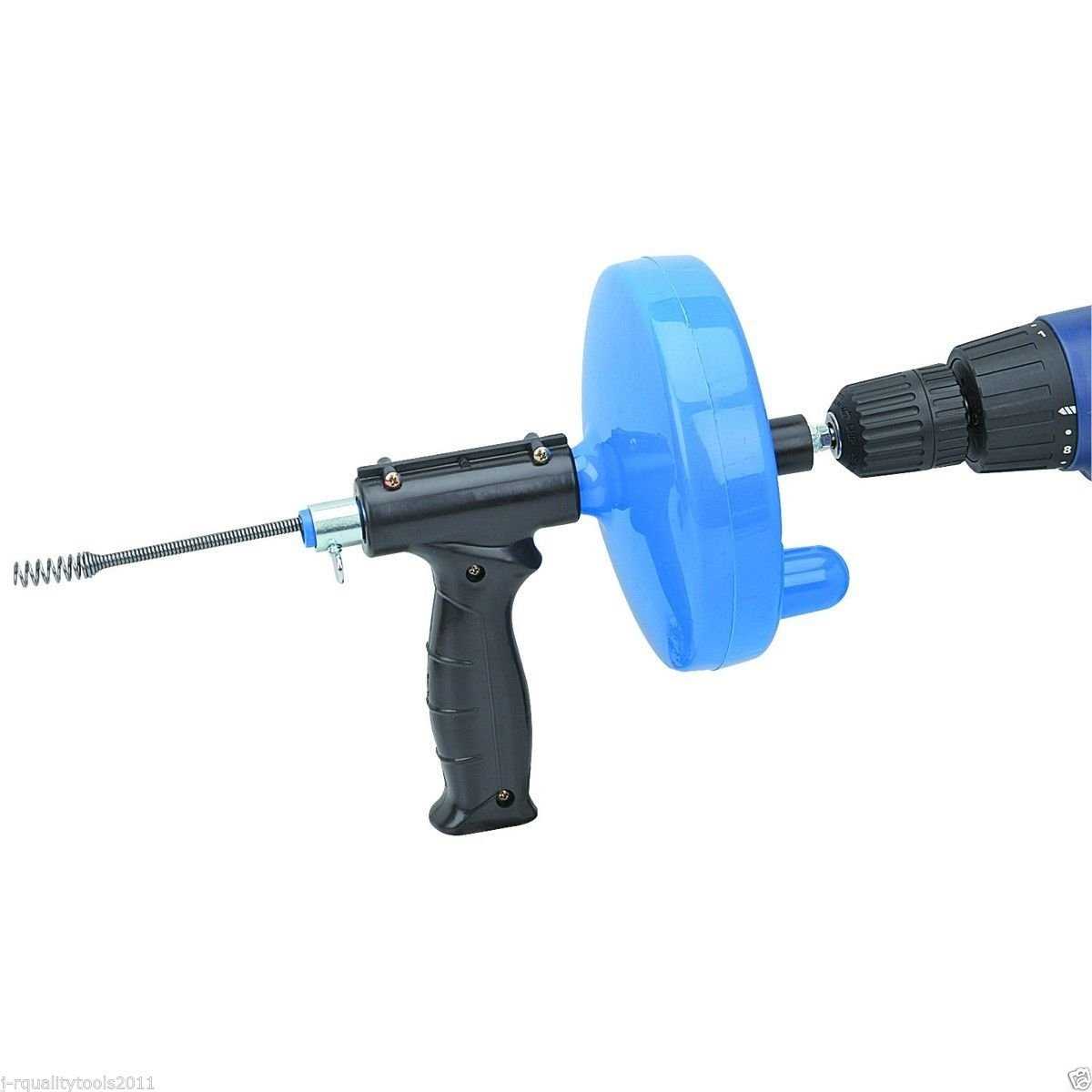
Keep an eye on the progress as you use the drain snake. If you encounter any resistance or the snake becomes stuck, stop immediately and assess the situation. It is important to avoid forcing the snake, as this can cause damage to the pipes.
7. Repeat if Necessary
If the drain is not fully unclogged after the first attempt, you may need to repeat the process. Remove the drain snake from the drain, clean off any debris, and start again from the beginning. Be patient and persistent until the clog is fully cleared.
8. Clean and Store the Equipment
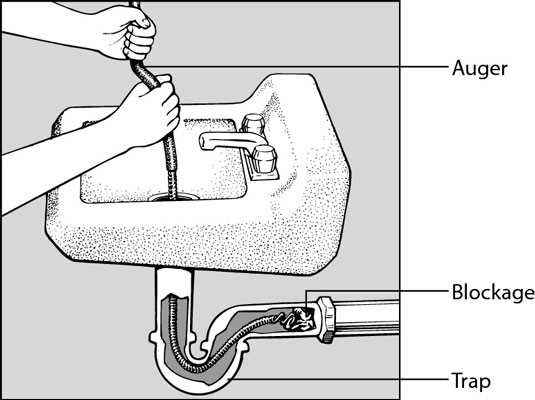
After using the drain snake, clean off any debris and store the equipment properly. This will help maintain its effectiveness and prolong its lifespan. Follow the manufacturer’s instructions for cleaning and storage to ensure the equipment remains in good condition.
Conclusion
By following these important steps, you can ensure safe and effective usage of a drain snake with a drill. Remember to always prioritize safety, take your time, and be patient when attempting to unclog drains. If you are unsure or uncomfortable with using a drain snake, it is recommended to seek professional plumbing assistance.
Steps to Use a Drain Snake with a Drill
Using a drain snake with a drill can be an effective way to clear out clogged drains quickly and efficiently. Here are the steps to follow:
- Prepare the area: Before you begin, make sure to protect the surrounding area by placing towels or a plastic sheet on the floor near the drain. This will help to catch any debris or water that may come out during the process.
- Attach the drain snake to the drill: Take the drain snake and insert it into the chuck of the drill. Make sure to tighten the chuck securely to hold the snake in place. This will ensure that the snake will not come loose while in use.
- Turn on the drill: Once the drain snake is securely attached to the drill, turn on the drill at a low speed. This will allow you to have better control over the snake as it moves through the drain.
- Insert the drain snake into the drain: Carefully insert the drain snake into the drain opening and start feeding it into the pipe. Use steady pressure to push the snake further into the pipe, allowing it to reach the clog.
- Rotate the snake: As the drain snake reaches the clog, slowly rotate the drill to engage the snake with the clog. The rotating action of the snake will help to break up the clog and clear the blockage.
- Continue feeding and rotating: While keeping the drill at a low speed, continue feeding the drain snake further into the pipe. As you encounter resistance, rotate the snake to break up the clog and allow it to pass through the pipe.
- Remove the drain snake: Once the drain is clear of the clog, slowly retract the drain snake from the pipe. Use caution to avoid any excess water or debris that may come out during the process. Dispose of any residue in a suitable manner.
- Clean and store the drain snake: After using the drain snake, clean it thoroughly to remove any debris or residue. Store it in a clean and dry place to ensure its longevity and to be ready for future use.
Using a drain snake with a drill is a convenient method to clear clogged drains effectively. By following these steps, you can easily unclog your drains and keep your plumbing system running smoothly.
A Step-by-Step Guide for Properly Operating a Drain Snake
Step 1: Gather the necessary tools and safety equipment
Before you start operating a drain snake, make sure you have the following tools and safety equipment:
- Drain snake with drill attachment
- Protective gloves
- Safety glasses
- Snake oil or lubricant
- Bucket or container for water disposal
Step 2: Prepare the drain and snake
Clear the area around the drain and remove any debris or standing water. Attach the drill attachment to the drain snake and make sure it is securely fastened. Apply a small amount of snake oil or lubricant to the tip of the snake to ensure smooth operation.
Step 3: Insert the drain snake
Slowly insert the drain snake into the drain opening, using a twisting motion to help it navigate through the pipes. Be careful not to force it too hard, as this could cause damage to the pipes.
Step 4: Operate the drill
Once the drain snake is fully inserted, turn on the drill at a low speed. This will engage the snake and start rotating it within the pipes. Gradually increase the drill speed as needed, but be cautious not to go too fast, as it may cause the snake to get stuck or tangle inside the pipes.
Step 5: Retrieve the snake
As the snake rotates, slowly pull it back out of the drain, continuing to operate the drill. The snake will catch onto any clogs or debris, helping to clear the blockage as it is removed.
Step 6: Clean up and dispose of debris
After removing the snake from the drain, carefully clean off any debris or residue from the snake and dispose of it in a bucket or container. Make sure to clean the area around the drain and dispose of any water that has collected during the process.
Step 7: Test the drain
Finally, run water down the drain to test its functionality. If the blockage has been successfully removed, the water should flow freely. If not, you may need to repeat the process or consider seeking professional help.
Step 8: Store the drain snake
Once you have finished using the drain snake, clean it thoroughly and store it in a dry and secure place for future use.
Following these steps will help you properly operate a drain snake with a drill attachment and effectively clear clogs and blockages from your drains.
FAQ:
What is a drain snake?
A drain snake, also known as a plumbing snake, is a long, flexible tool used to remove clogs and blockages from drains and pipes.
Can I use a drain snake with a drill?
Yes, you can use a drain snake with a drill. Using a drill to power the drain snake can provide more torque and make it easier to break through tough clogs.
How does using a drill with a drain snake work?
Using a drill with a drain snake involves attaching the end of the snake to the drill’s chuck and using the drill to rotate the snake as it is inserted into the drain or pipe. The rotating motion helps to break up clogs and allow the snake to navigate through the pipe more easily.
What kind of drill do I need to use with a drain snake?
You can use a regular handheld drill with a drain snake. However, it’s important to choose a drill with enough power and torque to handle the snake and effectively break up clogs.
Are there any safety precautions I should take when using a drain snake with a drill?
Yes, there are several safety precautions to keep in mind. It’s important to wear gloves and eye protection to protect yourself from any debris that may come out of the drain. Additionally, be careful not to apply too much pressure or force with the drill, as it could cause damage to the pipes.
Can I use a drain snake with a drill on all types of drains?
A drain snake with a drill can be used on most types of drains, including sink drains, bathtub drains, and shower drains. However, it’s important to ensure that the size and type of drain snake you are using is compatible with the specific drain you are working on.
Are there any other methods I can try before using a drain snake with a drill?
Yes, there are several other methods you can try before resorting to using a drain snake with a drill. These include using a plunger, pouring boiling water down the drain, or using a mixture of baking soda and vinegar. However, if these methods do not work, using a drain snake with a drill can be a more effective option.
Video:








